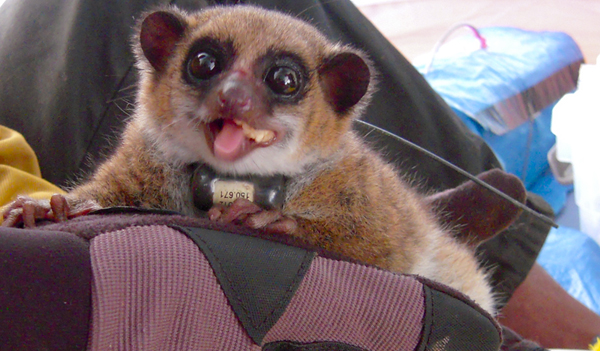
06/03/2018 - Press release
Dwarf lemurs are found only in Madagascar and are the only primates with the ability to hibernate
The Evolutionary Genomics research group at the IMIM, led by Mar Albà, has just published an article in the journal Molecular Ecology providing the results of a study that has identified which genes participate (change their expression) in the hibernation state of hairy-eared dwarf lemurs, which belong to the only group of primates that has the ability to hibernate. These small mammals store fats in their tails, allowing them to survive the months of shortage, and which they use as fuel during hibernation. Hibernation is a response to the lack of resources we normally associate with winter, but which can occur in other conditions of scarcity, such as in desert areas or, for example, during the dry season in Madagascar.
“The genes involved in hibernation are present in almost all mammals, including humans. It is a question of when and how they are expressed that makes the phenomenon of hibernation possible. As they are primates, lemur genes are relatively similar to those in humans, so it is even more interesting to study this species”, explains José Luis Villanueva-Cañas, a researcher from the IMIM's Evolutionary Genomics group.

Darf lemur of the study. Image from MUSINGS OF A JUNGLE QUEEN blog of Dr. Sheena Faherty
We can think about hibernation as a series of gene modules that work as a group. There is one module that makes it possible to survive on fat instead of carbohydrates; another that prevents muscles being annihilated during these months; and even a group of genes responsible for "reviving" the individual and returning it to its normal state.
The study of hibernation can have important implications in medicine, for example, controlled hypothermia could be used during surgery, or when trying to understand how to regenerate lost neural connections, a natural process in hibernating animals. Looking a little further, induced hibernation could be used to make long-term space travel possible, without the need to consume food.
Madagascar is a unique place in the world, particularly for its enormous biodiversity. As it is a relatively inaccessible island, the species that live there are unique. Sheena Faherty from the Duke Lemur Centre and principal co-author of the study, took three expeditions to the island in 2013, at different times of the year, to obtain adipose tissue samples from the tails of these animals and monitor their vital signs. Once the samples had been taken, they were sequenced at Duke University and the data was then sent to the Hospital del Mar Medical Research Institute (IMIM), where the information was analysed.
The researchers’ first step was to reconstruct the transcriptome, the sequences of all the genes expressed in any of the cells studied. The pieces they had were millions of small sections from these sequences. “It was as if we wanted to reconstruct a copy of our favourite book from millions of words or short phrases, from hundreds of copies of the same book cut into bits. This is a difficult task and needs powerful computers to look for overlapping phrases to rebuild the entire book. Once we had done this, we were able to identify hundreds of adipose tissue genes that change their expression during hibernation and analyse them in more detail”, explains Mar Albà, ICREA researcher and coordinator of the IMIM's Evolutionary Genomics group.
Fat-tailed lemurs make a hole underground to hibernate in, sheltered from predators. When they are hibernating they seem inert, they are cold to the touch and immobile. Their heart beats only a handful of times per minute and there can be up to 20 minutes between breaths. Their eyes are tightly shut, their tiny fists next to their faces, and their large tails carefully wrapped around their heads. Stories from the expeditions, together with spectacular photos, can be found on Sheena Faherty's blog that she wrote (in English) during her trips for this project: https://musingsofajunglequeen.wordpress.com
“These types of studies put unique species like this in the spotlight and serve to show that we must preserve our biodiversity. While we continue to dream about spacecraft and interstellar travel, we must not forget that everything starts with a small lemur buried deep in the Madagascan jungle", concludes José Luis Villanueva-Cañas.
Reference article:
Faherty SL*, Villanueva-Cañas JL*, Blanco MB, Albà MM, Yoder AD. Transcriptomics in the wild: hibernation physiology in free-ranging dwarf lemurs. Mol Ecol 2018.
Servei de Comunicació:
Marta Calsina Freixas(ELIMINAR)
Tel:
(+34) 93 316 06 80
Doctor Aiguader, 88
08226 Barcelona
© Institut Hospital del Mar
d'Investigacions MèdiquesLegal Notice and Privacy Policy | Cookie Policy | Site Index | Accessibility | Find Us | Contact